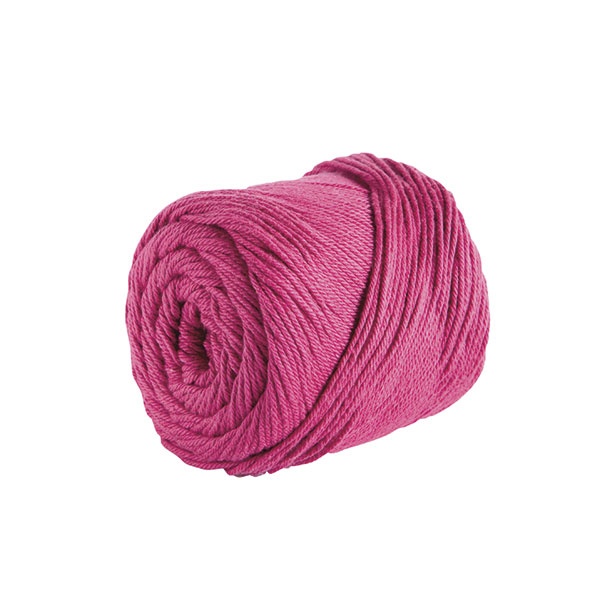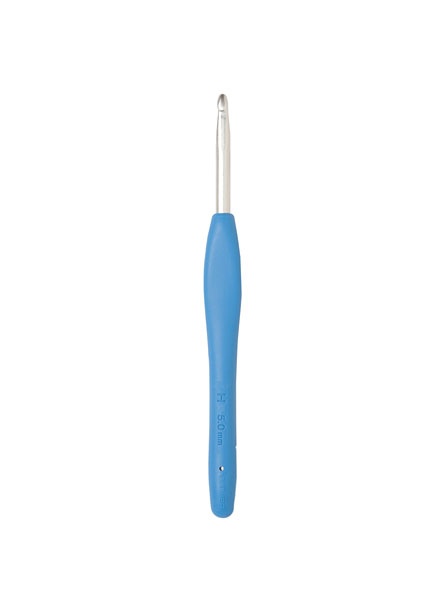Beginner Crochet Granny Square
I used to think granny squares were something only my grandmother could make, and that I'd never have the patience for all those tiny stitches and perfect corners. Then I realized granny squares are actually the perfect place to start with crochet forgiving, repetitive, and somehow therapeutic once you get into the rhythm. Today we're going back to basics with this classic crochet project that's perfect for beginners and can be used in countless projects, from blankets to bags. This simple pattern is designed to help you master the basic stitches while creating something beautiful and functional, one small square at a time.
Is This Project For Me?
If you're new to crochet or coming back after a long break, this is your perfect starting point. You want something you can work on while watching TV, that's portable enough for waiting rooms, and forgiving if you make mistakes. This works whether you're planning a full blanket project or just want to practice your stitches without pressure. You'll need basic crochet supplies and yarn, but nothing fancy or expensive to start. If you love the idea of creating something useful while learning a skill that'll last you a lifetime, this belongs on your list. Check out the free printable Fiber Arts Quick Guide below.
Get The Guide
Ready to stop feeling lost every time you pick up needles or thread? This guide covers the core techniques, tools, and terms for knitting, crocheting, weaving, and simple sewing. No more guessing, just clear steps and beginner checklists so you can actually start (and finish) projects you love.
Disclosure
Some links on FiberMaiden are affiliate links. When you click and purchase, I may earn a small commission at no extra cost to you. I partner only with brands and tools I trust and use in my own kitchen, studio, and garden. Your support means a lot.
Get 3 Free Recipe Sheets
Ready for recipes that don't require a culinary degree to follow? Get seasonal recipe sheets designed for real kitchens and busy lives the kind that work even when your kids are asking for snacks mid-prep.
Troubleshooting and Safety
Let's talk about what might have you ready to throw your hook across the room, because granny squares can be surprisingly humbling. Squares that won't lay flat and keep curling up? I've been there, staring at what looked more like a fabric taco than a square. Your tension is probably too tight - try loosening your grip on both the yarn and the hook. It takes practice to find that sweet spot.
Holes that are too big between stitches usually means your tension is too loose, or you're using a hook that's too large for your yarn weight. Check your yarn label for recommended hook sizes and adjust from there.
Wonky edges that don't look square? Count your stitches religiously, especially those corner chains. It's easy to skip them when you get into a rhythm, but they're what make the square actually square.
If your colors are pooling strangely instead of creating the pattern you expected, that's just how that particular yarn behaves. Don't take it personally sometimes switching yarn brands or colors fixes the issue completely.
Frequently Asked Questions
What skill level is needed
What yarn works best
What size hook should I use
How big should a granny square be
How do I join multiple squares
Do I need to block my squares
What can I make with granny squares
Fiber Arts Quick Guide
One page for yarn weights, needle & hook sizes, gauge basics, and quilt math. Keep within reach while you work.
Yarn weights at a glance
| Weight | CYC # | Knit gauge (sts/4 in) • Needles US | Crochet gauge (sts/4 in) • Hook |
|---|---|---|---|
| Lace | 0 | 33–40+ • 000–1 | 28–36+ • Steel/B–C |
| Fingering / Sock | 1 | 27–32 • 1–3 | 21–32 • B–E (2.25–3.5 mm) |
| Sport | 2 | 23–26 • 3–5 | 16–20 • E–7 (3.5–4.5 mm) |
| DK | 3 | 21–24 • 5–7 | 12–17 • 7–I (4.5–5.5 mm) |
| Worsted | 4 | 16–20 • 7–9 | 11–14 • I–K (5.5–6.5 mm) |
| Bulky | 5 | 12–15 • 9–11 | 8–11 • K–M/N (6.5–9 mm) |
| Super Bulky | 6 | 6–11 • 11–17 | 5–9 • M/N–Q (9–15 mm) |
| Jumbo | 7 | 1–6 • 17+ | 0–5 • Q+ (15 mm+) |
Always swatch. Fiber content, twist, and your tension change gauge.
Needle and hook conversions
Knitting needles (US ↔ mm)
| US | mm |
|---|---|
| 0 | 2.00 |
| 1 | 2.25 |
| 2 | 2.75 |
| 3 | 3.25 |
| 4 | 3.50 |
| 5 | 3.75 |
| 6 | 4.00 |
| 7 | 4.50 |
| 8 | 5.00 |
| 9 | 5.50 |
| 10 | 6.00 |
| 10.5 | 6.50 |
| 11 | 8.00 |
| 13 | 9.00 |
| 15 | 10.00 |
Crochet hooks (Letter ↔ mm)
| Hook | mm |
|---|---|
| B | 2.25 |
| C | 2.75 |
| D | 3.25 |
| E | 3.50 |
| F | 3.75 |
| G | 4.00 |
| 7 | 4.50 |
| H | 5.00 |
| I | 5.50 |
| J | 6.00 |
| K | 6.50 |
| L | 8.00 |
| M/N | 9.00 |
| N/P | 10.00 |
Gauge and swatch basics
- Knit or crochet a 6 × 6 in swatch. Wash and lay flat to dry.
- Measure the center 4 in square. Count stitches and rows.
- Stitches per inch: stitches in 4 in ÷ 4. Rows per inch: rows in 4 in ÷ 4.
Cast on = target width (in) × stitches per inch + 2 edge stitches.
Rows to length = target length (in) × rows per inch.
Quilt and sewing quick math
- Seam allowances: quilting 1/4 in • garments 5/8 in
- Half-square triangles (HST): cut size = finished size + 7/8 in (or add 1 in and trim to square)
- Quarter-square triangles (QST): cut size = finished size + 1 1/4 in
- Binding estimator: total length = perimeter + 12 in; strip count = ceil(total ÷ WOF). Typical strip width 2.5 in
- Prewash tips: prewash reds/darks. Press, square the grain, then cut.
Labeling and project notes
- Yarn or fabric source, colorway, lot, and fiber content
- Gauge and needle or hook size
- Pattern name and size adjustments
- Wash and care instructions
© FiberMaiden • www.fibermaiden.com












